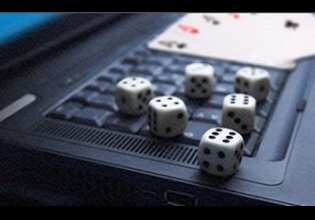
I have a four-year-old boy and he has a lot of Legos. They really are the perfect toy and it’s something we enjoy doing together. When we’re done for the day, I’m happy if I can just get him to gather them all up into a single bin, but I’ll often spend a little extra time once he’s in bed sorting our thousands of Legos into compartments based on type and size of the piece. Standard blocks go here, flat plates go there, and wheels and axles go there…
But invariably, after sorting everything I can, I’m left with a big pile of what I call “other” pieces: oddly shaped blocks, widgets, and hybrids that don’t fit into any easily defined category. I usually just dump the “other” pieces into a bin by themselves and call it a day. But I’ll be damned if that “other” bin doesn’t taunt me every time I see it. It drives me berserk that I can’t fit those pieces into some kind of easily distinguished category.
One of the common themes in my articles and videos over at CardRunners is the human brain’s need to impose order on the universe. We like looking for patterns in the chaos because it allows us to manage what might otherwise be a paralyzing sea of information bombarding us every day. Pattern recognition is one of the first skills we develop as children: sorting objects by shape or color or texture or size or whatever. And even as we grow older, our intellectual development is usually measured by our ability to find patterns. We are hardwired to constantly “sort Legos” as it were; it helps us understand how things interact and predict how other people are going to behave.
The problem is that like Legos, people don’t always fit into neat little categories. Human beings are complex creatures and, more often than not, you have to put them in the “other” box.
I’m almost ashamed to admit it now, but one of the first poker books I ever read was “Play Poker Like the Pros” by Phil Hellmuth. In that book, Hellmuth advises categorizing your opponents by style and labeling them with cute animal names. “Don’t try to bluff the Elephant, call the Jackal down light, and don’t get all-in against the Mouse without the stone cold nuts.”
The purpose of the gimmick is to teach new players that there is no single strategy that works against everyone – you have to play differently depending on your opponent. Which is true enough, but it doesn’t take long to learn the limitations of this strategy. No one plays exactly the same style 100% of the time and it can be very dangerous to treat them as though they do.
And yet, this tendency pervades the thinking of many advanced players who should know better. Our brain desperately wants to label people as a certain type and then forget about it. We casually toss them into manageable compartments: “old guy,” “internet whiz kid,” “clueless businessman.” And then we play against them as though they’re robots inflexibly programmed to behave a certain way. “Uh oh, old guy just raised me. He’s got the nuts.” That may be true, and in the absence of any other information it might even be the best policy. But what happens when our categories fail? Reacting to a player as though he’s playing one style when he’s actually playing another can be disastrous.
The following was posted in a thread about Dan Heimiller: “I played with him at PCA. He acts like a standard old guy at the table, but he 3bets like 40% of hands that are opened in front of him and he check-raises every hand. He plays stupid aggro and builds huge stacks because everyone just thinks he’s an old nit who’s running hot.”
If this poster’s assessment is correct, then Heimiller’s opponents are repeatedly making colossal blunders against him. They categorize him based on nothing but his appearance and he exploits that by playing a style opposite to the one they expect from him. By the time his opponents figure it out, he’s sitting on half the chips at the table.
I’m not suggesting you shouldn’t look for patterns in people’s behaviors and I’m not suggesting old guys aren’t nits. Many of them are and in the absence of any other useful information, a physical appearance is often better than nothing at all. But what I am suggesting is that you shouldn’t compartmentalize your opponents to the point where it makes you lazy.
We categorize to save computing power, but we should still be alert and reactive enough to notice immediately when someone doesn’t fit neatly into a category. If an old guy 3bets you, make a note of it. If he does it again, immediately start thinking about whether or not you’ve mis-categorized him. Poker spoils go to the players who can react the fastest.
For those who’d like to read a little deeper into the subject, this tendency to see other people as being generally predictable is called Trait Ascription Bias. It stems in part from our need to lump people and behaviors into categories. We know ourselves well enough to realize we’re complex creatures and our behavior varies day-to-day based on mood and circumstance. And yet when it comes to other people, we stick them in a tidy compartment and call it a day.
But plenty of old guys are capable of bluffing and plenty of internet whiz kids are passive nits. The “other” box is full of a lot more pieces than we’d like it to be, but it’s something we’re just going to have to learn to deal with or end up paying for very dearly.























